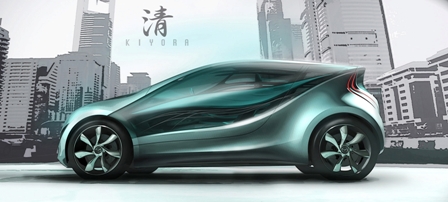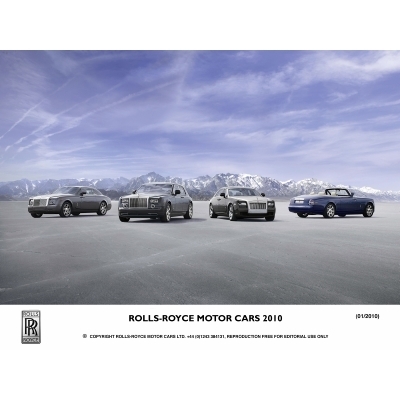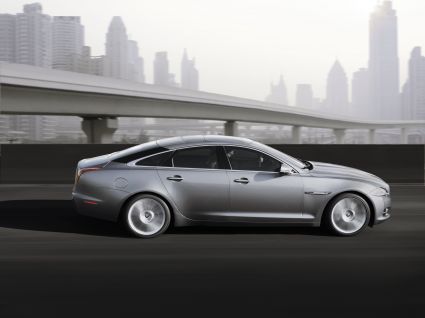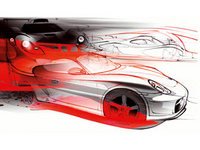The Elements of Auto Design: Vehicle Design Pros Talk Shop
Special to The Auto Channel
by Marty Bernstein
AIADA Contributing Editor
2010 New York Auto Show; A harbinger of spring in the automotive world,
the New York Auto show brings together the best of new vehicle design and
innovation. This year, 1.5 million people visited the show to take a look
at over one-thousand new cars, trucks, SUVs, and concept vehicles on
display. Despite the hype, talk of mileage and speed, and exhibits that
grow more novel by the year, there is one factor that ultimately grabs the
attention of show-goers: design.
Vehicle design is based on a number
of things: aerodynamic lines, curves, grille appearance, lighting
placement, doors, wheel covers, colors, and trim. Body style also plays a
pivotal role. Sedan or coupe? Small car or mid-size car? Crossover or
truck?
Vehicle design is the marriage of form and function. Nowhere
is this truer than in the vehicle interior. More time is spent inside the
car than anywhere else. From dashboard configuration to colors and
materials to sound and stereo options, the ergonomic design, safety, and
appearance of the interior must meet the prospects, needs, and budget of
the buyer.
Vehicle brand name completes the design package of a
vehicle. Billions of dollars are spent every year by auto brands to create
an image and reputation which homogenizes each vehicle design element into
the overall package. To understand the process by which various automakers
conceive and create their vehicles, AIADA recently spoke with several
leading automotive designers and product planning directors, including MINI
design director Gert Hildebrand, Mazda senior vice president of product
planning Bob Davis, former Nissan chief designer Bruce Campbell, BMW head
designer Adrian van Hooydonk, Rolls-Royce chief designer Ian Cameron,
Jaguar chief designer Ian Callum, as well as others from Hyundai, Kia, and
Bentley who are shaping the next generation of
automobiles.
Mazda: Design Begins with a Sketch
 In
spite of the technological and computer-based graphic and modeling tools at
the disposal of today's auto designers, Bob Davis says Mazda's cars start
as a sketch. "Based on a creative brief, our chief designer develops a
theme sketch of the car. It's a caricature-like presentation of the car
that is a bit cartoonish that is over dramatized and emphasized, yet this
is where we start. Then a whole team of designers will take the sketches
and execute them into reality."
In
spite of the technological and computer-based graphic and modeling tools at
the disposal of today's auto designers, Bob Davis says Mazda's cars start
as a sketch. "Based on a creative brief, our chief designer develops a
theme sketch of the car. It's a caricature-like presentation of the car
that is a bit cartoonish that is over dramatized and emphasized, yet this
is where we start. Then a whole team of designers will take the sketches
and execute them into reality."
Davis says engineering provides
input on things that look good but are not practical. "Everything comes
from that one theme sketch. We are very careful about keeping that theme
sketch up front at all times. It is very important when we're making the
final decision on the detail. For example, how the new door panel interacts
with the 'theme design' is very important, especially when management gives
us the okay to spend the money. This is a huge financial investment and
monies they provide are based on those theme sketches. That is why we use
so much discipline in following the theme sketches."
The
MINI Bible
When Gert Hildebrand, the charismatic director of MINI'S 30-person
design team in Munich, was asked who sets the design criteria, he responded
"In MINI design we treat exterior and interior design equally. We see the
car as whole and often develop a car from the inside out."
According
to Hildebrand, he strives for what he calls "family resemblance" in MINI's
vehicles. To accomplish this, he has compiled what he refers to as a "MINI
Bible." Hildebrand says that "the designers read it and tomorrow they must
do it."
Expanding on MINI's design philosophy, he notes, "We have
one team working on a new MINI, divided into three units: color and trim,
interior design, and exterior design. We try to create scenery where we see
the car for production and concepts. Where do we see the car? What kind of
roads? Where does it fit and how does it fit?" As the strategist,
Hildebrand says his 12 designers work in a symbiotic way that he can't
dictate. He sets the framework then picks the right people for the team,
receiving daily feedback on the process.
Global Designs: Too
Much of the Same Thing?
Bruce Campbell, the recently-retired director of design for Nissan USA,
believes automotive design, as a whole, lacks variety. In his speech to the
AW Design Forum earlier this year he said, "We are guilty of sameness!
There is an atmosphere - the economy, bad designs, and fear for blandness
in sheetmetal - that leads to sameness in automotive design." The
solution, Campbell feels, is to take risks while being fiscally responsible
and to use emerging technologies. "Challenge the sameness, be bold and
challenge ourselves."
Rolls-Royce: Defining and Detailing
Modern Day Luxury
 Times have changed and so has Rolls-Royce. In comparing the
newly redesigned Rolls-Royce Ghost to the Phantom, Ian Cameron, chief
designer, describes the car as a business suit or blazer whereas the
Phantom's formality resembles a tuxedo.
Times have changed and so has Rolls-Royce. In comparing the
newly redesigned Rolls-Royce Ghost to the Phantom, Ian Cameron, chief
designer, describes the car as a business suit or blazer whereas the
Phantom's formality resembles a tuxedo.
In describing the challenge
of bringing Rolls-Royce in line with modern vehicle design, Cameron says
that "While incorporating classic Rolls-Royce design cues - the elevated
prow, long bonnet, short front overhang, sharply raked A-pillar and elegant
tail - the Ghost had to exude an informal aura with contemporary touches,
including the latest evolution of the Rolls-Royce grille and chrome
exhausts for this, the most powerful Rolls-Royce ever
built."
Cameron and his team clearly did something right. Reviews
from various publications consistently proclaim the success of the new
car's design and capabilities.
BMW: Merging Emotion and
Rationality
Adrian van Hooydonk, a young Dutch designer, took over the reins of BMW
design five years ago. As designer of the 7-Series, AIADA asked what the
biggest challenge in his new role was. van Hooydonk responded, "Today we
have a recognizable BMW image with its own distinct personality and
character. Sustainability and fuel consumption are going to be important
considerations in the future. What will a car look like and if it is
engineered from the ground up? We don't want to answer that on a technical
level only, but also on an emotional level."
He continues, "There
are ways to demonstrate dynamic driving sensation and emotional design with
all the rational elements of lowering fuel consumption and emissions. The
new 7-series, Z4, and GR are, in essence, the way we see BMW moving
forward."
How does he see BMW accomplishing this? "There is not a
cook book for us. We can change things depending on the car. New materials,
including carbon fiber combined with aluminum structures are ways to reduce
weight which will be a critical factor in the future. Lightweight
construction is going to be the key. We're trying to make beautiful cars.
But beauty is in the eye of the beholder, and you've got to decide how many
eyes you're trying to please. Our goal is to communicate - through
proportions, surfaces, stance - the performance, agility, and power. So we
communicate to people who find that performance attractive. Buying a BMW is
an emotional decision, but you must be able to rationalize
it."
Jaguar: Back as the Sharpest Cat on the
Road
 While
managed by Ford in recent years, the venerable Jaguar marquee lost its
sheen. However, since Tata Motors took over the luxury brand, design
director Ian Callum has made strides in regaining the acclaim that Jaguar
was known for.
While
managed by Ford in recent years, the venerable Jaguar marquee lost its
sheen. However, since Tata Motors took over the luxury brand, design
director Ian Callum has made strides in regaining the acclaim that Jaguar
was known for.
The new Jaguar XJ has received accolades from almost
every auto reviewer and critic. But, explains Callum in a recent
journalist walk-around, "Jaguar isn't torn between heritage and modernity
for the simple reason that they are one and the same. Most people see
Jaguars as traditional looking cars, but what people have forgotten is how
radical, sleek, and sexy Jaguar was at one time."
"To create new
Jaguars," he continues, "we had to throw away the rule book keeping only
the brand's purity of line. Good design is about pushing the boundaries on
physics and legislation and challenging yourself to do
better."
Based on the comments of some of the auto industry's top
professionals, it's clear that each brand has its own design methods
resulting in distinct vehicle personalities. Although the vehicles may
change, one thing is certain. Future auto show attendees - and even the
casual browser on an auto lot - can expect a steady supply of cutting edge
vehicle designs in the years to come.



